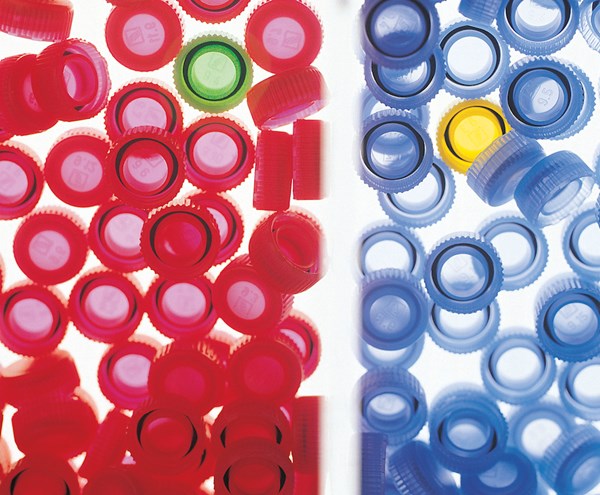PE, PP March Into March with Upward Pricing
PetroChemWire shares its current outlook on polyolefin prices with polyolefins pointing higher.
PetroChemWire shares its current outlook on polyolefin prices with polyolefins pointing higher.
Higher prices for both PE and PP are expected to be in place by end of this month, and further price increase attempts are underway for March, but how they shake out is not entirely clear. In this third week of the shortest month of the year, I checked in with senior editor David Barry at Houston-based PetroChemWire (PCW). One thing that appears to be applicable to both PE and PP is that availability of both resins is categorized as relatively tight, at least at this juncture.
• PE update: Polyolefin suppliers have been intent on implementing their February 1, 5ȼ/lb increase and all indications are that this will be a full implementation. They are also out with a March 1, 6ȼ/lb price hike.
Asked how he sees things faring for these price initiatives, PCW’s Barry says, “I’m not seeing any weakness at all in the February 5ȼ/lb increase initiative. It’s a little too soon to get a good read on the March PE increase, but end users are saying that it would be difficult for the market to absorb an 11ȼ/lb increase in a period of two months. The big question in my mind is whether the strong domestic demand pattern will hold up in March. Also, what will happen to the crude oil market?”
Barry’s assessment is that barring another upward push on crude oil prices, domestic PE suppliers will have difficulty squeezing a much higher price out of the international PE market. The export market, which has been a significant outlet for suppliers, has already been challenged by higher spot PE prices as supplies became sparser.
• PP Update: Having moved up a whopping 10ȼ/lb in January, in step with propylene monomer contract settlement to 41ȼ/lb, PP prices are poised to move up this month on the order of 6-8ȼ/lb, based on yet unsettled price nominations for February monomer contracts.
PCW’s Feb. 17, weekly report noted that preliminary industry data for January showed PP production rates—which had been throttled back in fourth quarter 2016—are back above 90%. Also for last month, North American PP sales registered as the highest since December 2015. While January showed this surge in demand, PCW’s Barry doubts that this may be a sign of an overall trend at this moment in time.
“I’m getting mixed signals on PP demand, so I wouldn’t agree 100% that we’re in a strong demand environment. January domestic sales were above average, but February and March sales are likely to come out lower as end users respond to the propylene/PP price surge, which is viewed as a temporary trend. However, it’s not clear how far this plateau in propylene prices will extend. If PP demand suffers, that could offset any supply factors. And you can make some arguments that propylene supply won’t be as tight going forward.”
He explains the latter this way: cash costs for precursors propane and butane are falling relative to cash costs of ethane; PCW forward curves show them becoming cheaper than ethane starting in March. Moreover, olefin crackers yield significantly higher byproduct propylene production by cracking propane or butane instead of ethane.
Asked if he anticipates a new influx of imported PP pellets once again flooding the domestic market this year, or if this is less likely due to higher PP price globally, Barry says, “PP resin imports are on the way, but the volumes are not as great as a year ago because the prices in Asia are higher and the arbitrage window is narrower.”

Related Content
Melt Flow Rate Testing–Part 1
Though often criticized, MFR is a very good gauge of the relative average molecular weight of the polymer. Since molecular weight (MW) is the driving force behind performance in polymers, it turns out to be a very useful number.
Read MoreNew Entrant Heartland Polymers Stepping up as Reliable Supplier
Heartland Polymers’ new Alberta, Canada facility will produce 525 KTA propylene and 525 KTA polypropylene. It is expected to stabilize supply chains across the continent.
Read MoreThe Fundamentals of Polyethylene – Part 1: The Basics
You would think we’d know all there is to know about a material that was commercialized 80 years ago. Not so for polyethylene. Let’s start by brushing up on the basics.
Read MoreImproving Twin-Screw Compounding of Reinforced Polyolefins
Compounders face a number of processing challenges when incorporating a high loading of low-bulk-density mineral filler into polyolefins. Here are some possible solutions.
Read MoreRead Next
Advanced Recycling: Beyond Pyrolysis
Consumer-product brand owners increasingly see advanced chemical recycling as a necessary complement to mechanical recycling if they are to meet ambitious goals for a circular economy in the next decade. Dozens of technology providers are developing new technologies to overcome the limitations of existing pyrolysis methods and to commercialize various alternative approaches to chemical recycling of plastics.
Read MoreTroubleshooting Screw and Barrel Wear in Extrusion
Extruder screws and barrels will wear over time. If you are seeing a reduction in specific rate and higher discharge temperatures, wear is the likely culprit.
Read More













.png;maxWidth=300;quality=90)










